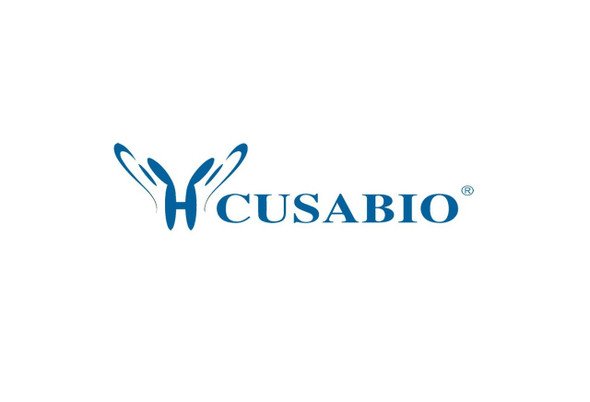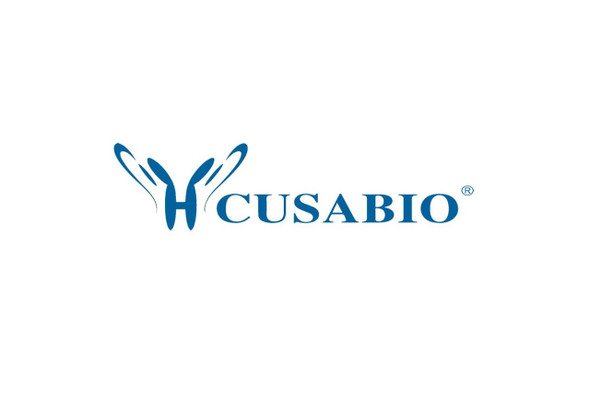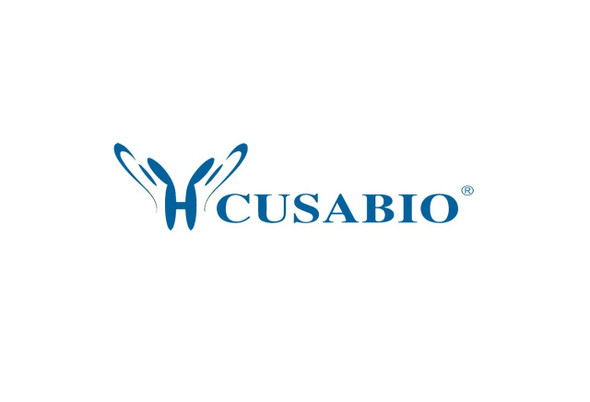Cusabio Other Organism Recombinants
Recombinant Hepatitis B virus genotype C subtype ayw Capsid protein (C) | CSB-YP314449HEI
- SKU:
- CSB-YP314449HEI
- Availability:
- 3 - 7 Working Days
Description
Recombinant Hepatitis B virus genotype C subtype ayw Capsid protein (C) | CSB-YP314449HEI | Cusabio
Alternative Name(s): Core antigen;Core proteinHBcAgp21.5
Gene Names: C,HBcAg
Research Areas: Others
Organism: Hepatitis B virus genotype C subtype ayw (isolate China/Tibet127/2002) (HBV-C)
AA Sequence: MDIDPYKEFGASVEVLSFLPSDFFPSNRDLLDTASALDREALESPEHCSPHHTALRQAILCWGELMNLATWVGSNLEDPASRELVVSYVNVNMGLKIRQLLWFHISCLTFGRETVLEYLVSFGVWIRTPPAYRPPNAPILSTLPETTVVRRRGRSPRRRTPSPRRRRSQSPRRRRSQSRESQC
Source: Yeast
Tag Info: N-terminal 6xHis-tagged
Expression Region: 1-183aa
Sequence Info: Full Length
MW: 23 kDa
Purity: Greater than 90% as determined by SDS-PAGE.
Relevance: Self assbles to form an icosahedral capsid. Most capsid appear to be large particles with a icosahedral symmetry of T=4 and consist of 240 copies of capsid protein, though a fraction forms smaller T=3 particles consisting of 180 capsid proteins. Entering capsid are transported along microtubules to the nucleus. Phosphorylation of the capsid is thought to induce exposure of nuclear localization signal in the C-terminal portion of the capsid protein that allows binding to the nuclear pore complex via the importin (karyopherin-) alpha and beta. Capsids are imported in intact form through the nuclear pore into the nuclear basket, where it probably binds NUP153. Only capsids that contain the mature viral genome can release the viral DNA and capsid protein into the nucleoplasm. Immature capsids get stucked in the basket. Capsids encapsulate the pre-genomic RNA and the P protein. Pre-genomic RNA is reverse transcribed into DNA while the capsid is still in the cytoplasm. The capsid can then either be directed to the nucleus, providing more genome for transcription, or bud through the endoplasmic reticulum to provide new virions .Encapsidates hepatitis delta genome.
Reference: The dominant hepatitis B virus genotype identified in Tibet is a C/D hybrid.Cui C., Shi J., Hui L., Xi H., Zhuoma X., Quni X., Tsedan X., Hu G.J. Gen. Virol. 83:2773-2777(2002)
Storage: The shelf life is related to many factors, storage state, buffer ingredients, storage temperature and the stability of the protein itself. Generally, the shelf life of liquid form is 6 months at -20?/-80?. The shelf life of lyophilized form is 12 months at -20?/-80?.
Notes: Repeated freezing and thawing is not recommended. Store working aliquots at 4? for up to one week.
Function: Self assembles to form an icosahedral capsid. Most capsid appear to be large particles with a icosahedral symmetry of T=4 and consist of 240 copies of capsid protein, though a fraction forms smaller T=3 particles consisting of 180 capsid proteins. Entering capsid are transported along microtubules to the nucleus. Phosphorylation of the capsid is thought to induce exposure of nuclear localization signal in the C-terminal portion of the capsid protein that allows binding to the nuclear pore complex via the importin (karyopherin-) alpha and beta. Capsids are imported in intact form through the nuclear pore into the nuclear basket, where it probably binds NUP153. Only capsids that contain the mature viral genome can release the viral DNA and capsid protein into the nucleoplasm. Immature capsids get stucked in the basket. Capsids encapsulate the pre-genomic RNA and the P protein. Pre-genomic RNA is reverse transcribed into DNA while the capsid is still in the cytoplasm. The capsid can then either be directed to the nucleus, providing more genome for transcription, or bud through the endoplasmic reticulum to provide new virions.
Involvement in disease:
Subcellular Location: Virion, Host cytoplasm
Protein Families: Orthohepadnavirus core antigen family
Tissue Specificity:
Paythway:
Form: Liquid or Lyophilized powder
Buffer: If the delivery form is liquid, the default storage buffer is Tris/PBS-based buffer, 5%-50% glycerol. If the delivery form is lyophilized powder, the buffer before lyophilization is Tris/PBS-based buffer, 6% Trehalose, pH 8.0.
Reconstitution: We recommend that this vial be briefly centrifuged prior to opening to bring the contents to the bottom. Please reconstitute protein in deionized sterile water to a concentration of 0.1-1.0 mg/mL.We recommend to add 5-50% of glycerol (final concentration) and aliquot for long-term storage at -20?/-80?. Our default final concentration of glycerol is 50%. Customers could use it as reference.
Uniprot ID: P0C6H7
HGNC Database Link: N/A
UniGene Database Link: N/A
KEGG Database Link: N/A
STRING Database Link: N/A
OMIM Database Link: N/A









